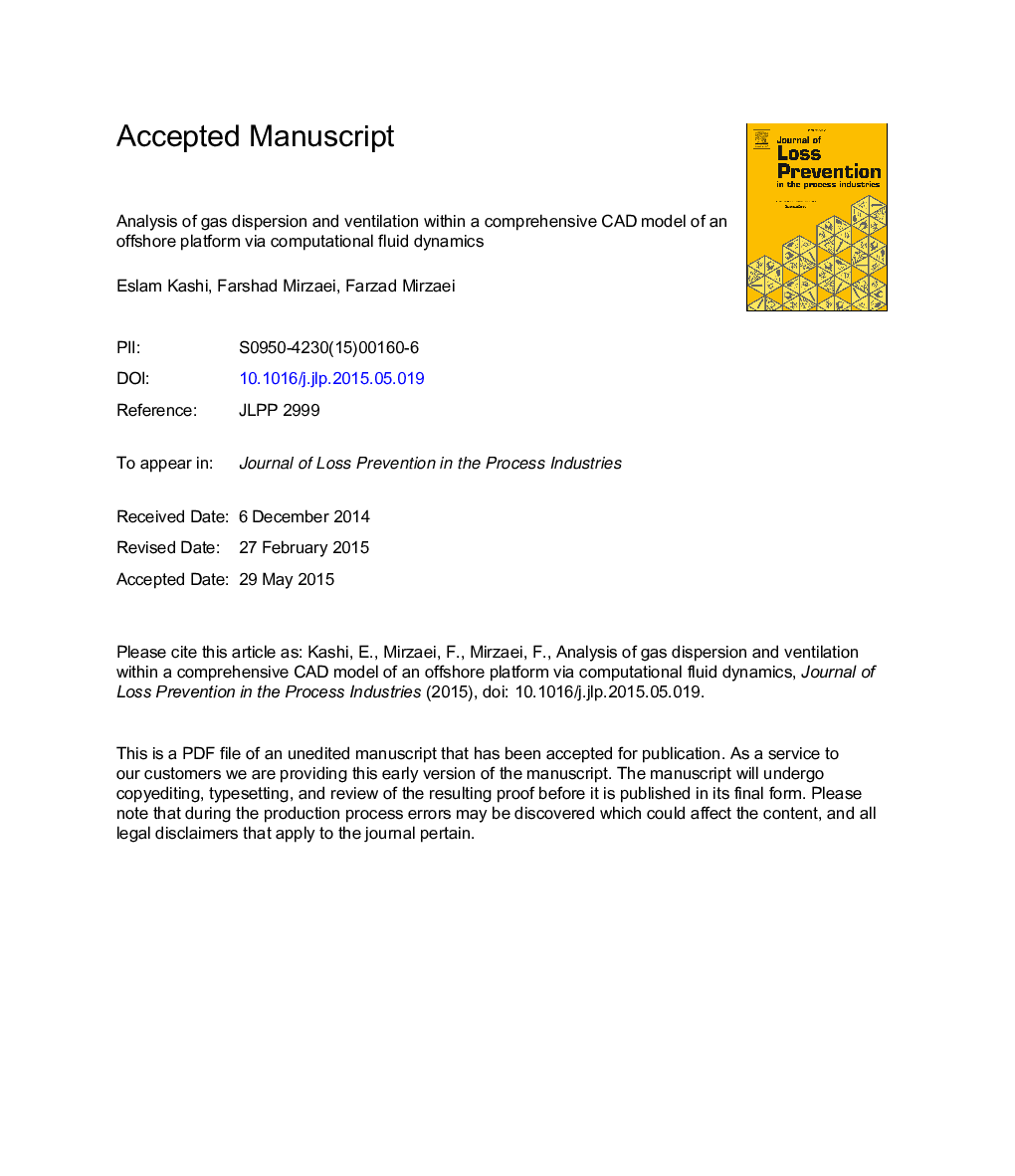| Article ID | Journal | Published Year | Pages | File Type |
|---|---|---|---|---|
| 6973334 | Journal of Loss Prevention in the Process Industries | 2015 | 29 Pages |
Abstract
Maintaining an adequate air flow with a desired air quality that is free from hazardous gases is among the most important actions taken toward the improvement of safety in any process plant. Due to the increased focus on the consequences of existing hazardous material on safety, health, and the environment, air quality and sufficient ventilation within a plant has been increasingly considered in the design stage. This paper investigates and analyzes methane and hydrogen sulfite dispersion and the effect of air ventilation within a CAD model of an offshore platform using computation fluids dynamics (CFD). In addition, this method and its principals could be utilized in any other hazardous environment. Simulations of possible hazardous events along with solutions for preventing or reducing their probability are presented to better assess the data. These investigations are performed by considering hypothetical hazardous scenarios which consist of gas leakages from pipes and process equipment under different conditions. After drafting a precise and highly detailed CAD model of the plant and performing CFD simulations on this model, the results of gas behaviors, dispersion, distribution, accumulation, and its possible hazards are investigated and analyzed. The larger amount of details of the actual plant model in CFD simulation are obtained by using a combination of different methods and software. These include PDMS for 3-D drawing of the plan, Rinoceros for geometrical integration of the process equipment and facilities, and Sharc Harpoon which meshes the model. Moreover, the probability of inducing ignitable or toxic concentration of gases within the atmosphere and air ventilation of the unit is considered by these investigations.
Related Topics
Physical Sciences and Engineering
Chemical Engineering
Chemical Health and Safety
Authors
Eslam Kashi, Farshad Mirzaei, Farzad Mirzaei,
